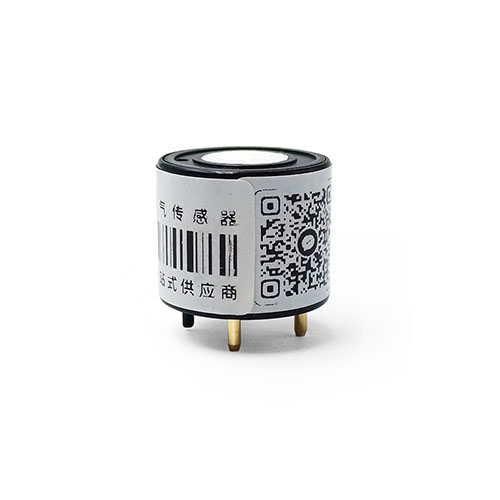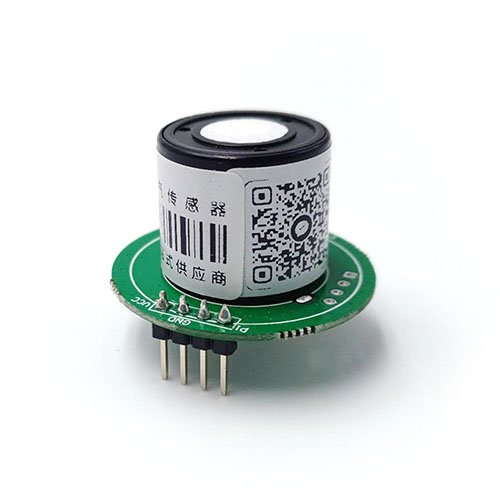Industrial oxygen sensor
Oxygen is indispensable in our lives, and in industrial production, oxygen plays a lot of roles, people use Industrial oxygen sensors to detect the concentration of oxygen.
Structure of electrochemical industrial oxygen sensor
An electrochemical Industrial oxygen sensor is a kind of device that utilizes electrochemical principles to detect and measure oxygen concentration. It is mainly based on the redox reaction involving oxygen, which generates an electric current inside the sensor, thus converting the oxygen concentration into an electrical signal output. This type of sensor usually contains the following key components:
Sensing probe: also known as an oxygen electrode, which contains one or more pairs of electrodes. A typical electrochemical oxygen sensor will have a cathode (commonly made of materials such as PTFE membranes coated with catalysts such as platinum or gold) and an anode (e.g., lead), and will sometimes contain a reference electrode.
Electrolyte: The inside of the sensor is filled with an electrolyte solution that allows ions to move between the electrodes, facilitating a chemical reaction.
Catalytic layer: The cathode is covered with a catalyst that accelerates the reduction reaction of oxygen on the electrode surface.
Diaphragm: The sensor has a layer of microporous structure that allows oxygen to penetrate and come into contact with the electrodes while preventing other gaseous or liquid substances from entering the interior of the sensor.
Signal Conversion Circuit: The current (or voltage) generated is proportional to the oxygen concentration and is converted into a corresponding digital signal or standardized analog signal output through the circuit.
When the electrochemical Industrial oxygen sensor works, oxygen passes through the diaphragm to the cathode, where a reduction reaction occurs with the catalyst and an oxidation reaction occurs at the anode, forming a closed current loop. The sensor indirectly reflects the oxygen concentration by measuring this current.
Principle of operation of the electrochemical industrial oxygen sensor
The working principle of the electrochemical industrial oxygen sensor is based on electrochemical redox reactions and Faraday’s law. The basic process is as follows:
Diffusion: Oxygen from the environment to be measured diffuses through the microporous permeable membrane at the top of the sensor into the electrolyte area inside the sensor.
Chemical reaction: Oxygen comes into contact with a catalyst at the cathode (working electrode) of the sensor and undergoes a reduction reaction, e.g. O₂ gets electrons and changes into OH-. At the anode, the opposite oxidation reaction may occur to maintain the charge balance of the system. The exact form of the chemical reaction will depend on the design of the sensor and the materials used.
Current generation: Driven by a potential difference, oxygen molecules interact with the catalyst on the cathode surface to transfer electrons and form a current. According to Faraday’s law, the current generated is directly related to the molar amount of oxygen, i.e. the current strength is proportional to the oxygen concentration.
Signal Conversion: The sensor is usually equipped with a constant potential circuit inside to maintain the optimum potential at which the reaction takes place and to ensure the accuracy of the measurement. The current generated is converted into a voltage signal or other electrical signal that can be easily processed and transmitted. The magnitude of this signal reflects the concentration of oxygen in the environment.
Output Signal: The converted electrical signal can be further processed through amplification, filtering, and digitization to finally display the specific value of oxygen concentration.
Industrial oxygen sensor applications
1. Iron and steel smelting
In the process of iron and steel smelting, the oxygen sensor can monitor the oxygen concentration in the furnace, help the steelmakers understand the state of the furnace, and control the atmosphere and furnace temperature, so as to improve the production efficiency and steel quality.
2. Chemical industry
In chemical production, the oxygen sensor can monitor the change in oxygen concentration in the reaction system to ensure the smooth progress of the chemical reaction. It can also be used to detect the lack of oxygen and the release of harmful gases during the reaction process to ensure quality and safety.
3. Environmental monitoring
Oxygen sensors can also be used in environmental monitoring. For example, in waste gas treatment, the oxygen sensor can detect the change of dissolved oxygen in the treatment device and adjust the process conditions to improve the efficiency of waste gas treatment. At the same time, it can also be used for urban traffic control, air quality monitoring, and other aspects.
4. Food processing
Oxygen sensors can be used in food processing. For example, in the canning process, the oxygen sensor can detect the oxygen concentration in the can to help ensure the preservation time and quality of food.







